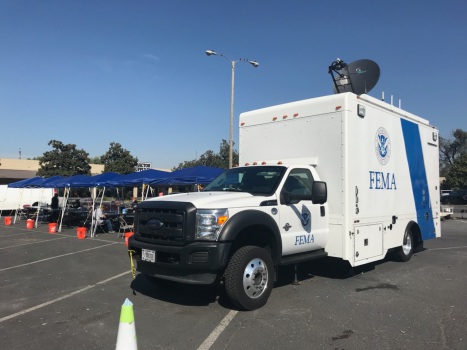When natural disasters, emergencies, or any unforeseen event occurs, the need for effective and reliable communication is paramount. During such times, terrestrial communication systems may become overloaded, damaged, or even completely non-functional. In such situations, satellite communications play a crucial role in providing a robust and reliable communication network for emergency response and disaster recovery.
Understanding Satellite Communications
Before delving into the role of satellite communications in emergency response and disaster recovery, it is essential to understand what satellite communications are. Satellite communications involve the use of artificial satellites orbiting the earth to provide communication services over long distances.
Satellites used for communication can be categorized into two types: geostationary satellites and low earth orbit (LEO) satellites. Geostationary satellites remain fixed in one position above the earth’s equator, while LEO satellites orbit the earth at a lower altitude.
Advantages of Satellite Communications in Emergency Response and Disaster Recovery
Satellite communications have several advantages over terrestrial communication systems in emergency response and disaster recovery situations. Some of these advantages include:
a. Wide Coverage Area: Satellite communication systems can cover a vast area, including remote and hard-to-reach locations. This makes them an ideal communication option during natural disasters and emergencies where terrestrial communication infrastructure may be destroyed or non-existent.
b. Quick Deployment: Satellite communication systems can be deployed quickly, making them an ideal option for emergency response and disaster recovery situations.
c. Reliable Communication: Satellite communication systems are less susceptible to damage caused by natural disasters, making them a reliable communication option in emergency situations.
Use Cases of Satellite Communications in Emergency Response and Disaster Recovery
a. Search and Rescue Operations: During natural disasters or emergencies, search and rescue operations may be required to find and rescue victims. Due to the digitalization in shipping industry, satellite communications are used to provide real-time communication between the rescue team and command centers, facilitating a coordinated and effective search and rescue operation.
b. Disaster Response Coordination: In the aftermath of natural disasters, emergency response teams require quick and reliable communication to coordinate rescue efforts, provide aid and resources, and ensure the safety of victims. Satellite communications can provide this communication network, facilitating an efficient response to the disaster.
c. Communication with Remote Communities: In remote areas, satellite communications are the only reliable means of communication. During natural disasters or emergencies, these communities may become isolated, making satellite communications crucial for their survival.
Case Study: Hurricane Katrina
One of the most devastating natural disasters in recent history, Hurricane Katrina, highlighted the importance of satellite communications in emergency response and disaster recovery. Hurricane Katrina hit the Gulf Coast of the United States in 2005, causing widespread destruction and loss of life.
During the hurricane, terrestrial communication infrastructure, including landlines and cell towers, were damaged or destroyed, leaving the affected areas without any means of communication. In such a scenario, satellite communications played a crucial role in providing a reliable and robust communication network for emergency responders and victims.
Satellite phones and other satellite communication devices were used to establish communication links between emergency responders, command centers, and victims. This facilitated an efficient response to the disaster, with rescuers able to communicate and coordinate their efforts effectively.
Challenges of Satellite Communications in Emergency Response and Disaster Recovery
While satellite communications provide an excellent option for emergency response and communication services maritime sectors optimised big time, there are still some challenges that need to be addressed. Some of these challenges include:
a. Cost: Even after major maritime optimisation & communication revolution, satellite communication systems can be expensive to deploy and maintain, making them inaccessible to some regions or organizations.
b. Limited Bandwidth: Satellite communication systems offer integrated data compression and emailing software solutions but they still have limited bandwidth, which can make it challenging to transmit large amounts of data, such as live video feeds or images.
c. Interference: Satellite communication systems can be affected by interference from other satellite systems, making it challenging to maintain a reliable communication network.
Future of Satellite Communications in Emergency Response and Disaster Recovery
Satellite communications technology is continuously evolving, providing new and improved communication options for emergency response and disaster recovery situations. Some of the developments in satellite communication technology include:
a. Use of Small Satellites: Smaller satellites are becoming increasingly popular for emergency response and disaster recovery communication. These small satellites are cheaper to produce, making them an ideal option for deployment during emergencies.
b. Internet of Things (IoT) Integration: IoT technology is being integrated with satellite communication systems, providing real-time data on disaster situations and aiding emergency response efforts.
Conclusion
Satellite communications play a crucial role in emergency response and disaster recovery efforts. Their ability to provide reliable communication in remote and hard-to-reach locations make them an ideal option during natural disasters and emergencies. With the continuous evolution of satellite communication technology, it is expected that satellite communication solutions like the ones offered by IEC Telecom will become even more critical in emergency response and disaster recovery efforts. However, the challenges associated with satellite communications need to be addressed to ensure that they remain an accessible and reliable communication option for all organizations and regions.
- How to Prepare for a Cyber Security Job Interview - June 15, 2023
- Unblocked Games: Unlocking Fun and Learning Without Restrictions - June 14, 2023
- The 10 Principles of Insider Risk Management - June 14, 2023

